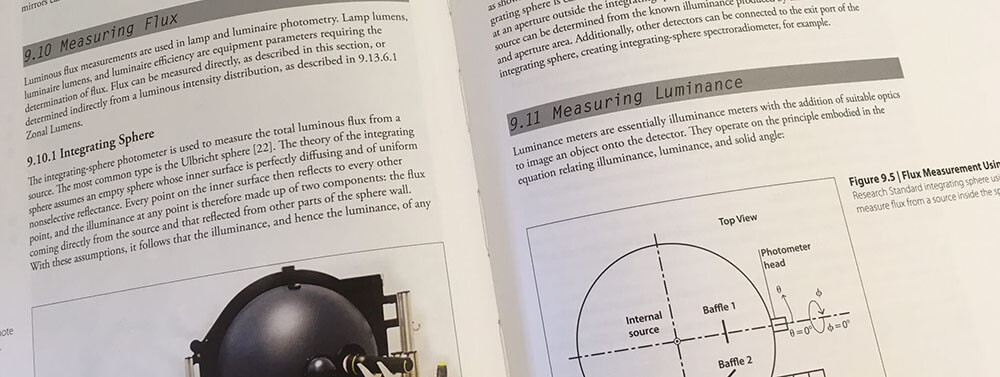“What bulb goes in the cans?”
That is a phrase guaranteed to roll the eyes of any lighting designer. Just as an architect calls a window “glazing”, lighting designers use a specific vocabulary to describe the equipment, concepts, and aesthetic qualities of their work. By learning the language you will be able to have a clear concise discussion about lighting with your design team. Below are some terms that will help kick-start this new dialogue:
Lamp: the light source inside a fixture. This could be halogen, metal halide, fluorescent, LED, or any number of technologies, but a lamp always refers to the object inside a fixture that creates the light. Often a lamp includes a bulb, which is the glass covering around the other parts.
Fixture (or Luminaire): a complete lighting unit including at least a housing and a lamp. May also include components like ballasts, transformers, drivers, reflectors, lenses, fans, shades, etc. Luminaire is the formal name, but Fixture is much more common in daily usage.
Downlight: a type of fixture that is installed recessed (or semi-recessed) into a ceiling. These are designed to provide directional light from above and often are used as general lighting within a space. Sometimes referred to as cans or hi-hats, but not by the lighting industry. This term also refers to the light produced by such a fixture.
Wallwasher: any type of fixture used with the purpose of washing a wall with light. These may be recessed and similar in appearance to a downlight, but they may also be mounted outside a ceiling system, or occasionally at the ground plane. (see Wash and Graze below)
Uplight: any fixture mounted in a position to provide light above 90 degrees from nadir. Also refers to the light produced by such a fixture.
Cove: refers to an architectural detail that provides a pocket near a wall or ceiling plane with an integrated and concealed fixture. Light emanates from the pocket and creates a soft glow on the adjacent surface.
Lumen: a measure of the raw amount of light a fixture (or lamp) produces.
Candlepower: a measure of the amount of light in a particular direction that a fixture produces.
Footcandle (or Lux in SI units): unit of Illuminance, which cannot be seen, but is a measure of the light at a point. Light must hit an object to be observed, the intensity of the light is then known as Luminance. The observed amount of light is affected by surface texture and reflectance. For example, 100 footcandles observed on a white surface will appear much brighter than the same 100 footcandles observed on a black surface. In this case the illuminance is the same, but the luminance would be different. Lighting designers take into account finishes, which is why they may provide a higher level of footcandles in a room with dark surfaces.
Beam Angle: the angle measurement of the cone of light emitted from a fixture or lamp. Specifically the angle is measured to 50% of total candlepower. Field Angle is the same cone, but measured to 10% of total candlepower. For example, a 30 degree beam would mean that 50% of the fixture’s light output is contained in a 30 degree cone.
Flood: any fixture or lamp that has a 25 degree or higher beam angle. Also refers to a lighting technique using such fixtures that washes a surface with a large area of light.
Spot: any fixture or lamp that has a beam angle below 25 degrees. Also refers to a lighting technique using such fixtures that provide a tight area of light on a surface.
Wash: a technique that uniformly lights a surface. Accomplished with low angle front light aimed nearly perpendicular to the surface to be lit.
Graze: a technique that lights a surface with a high level of contrast. Accomplished with high angle light aimed nearly parallel to the surface to be lit.
Glare: offensive light that is seen directly from a lamp. Glare also occurs when the lamp is visible in specular (mirrored) surfaces. Occasionally occurs when the lamp is concealed, but still provides too much light for the comfort of direct viewing of the fixture.
Sparkle: low-level light that is seen directly from a lamp or in specular surfaces. Not all lamps produce glare when viewed directly, instead this technique is deliberate and intended to show points of glittering light.
This list is by no means exhaustive, but provides a basis for understanding lighting vocabulary. If you are curious about another term you have heard in reference to lighting, send us an email. The Lighting Practice is always eager to have a conversation with our clients and colleagues about our industry and how we work.
*Lighting Lesson by Stephen R. Hoppe, former Associate with The Lighting Practice





